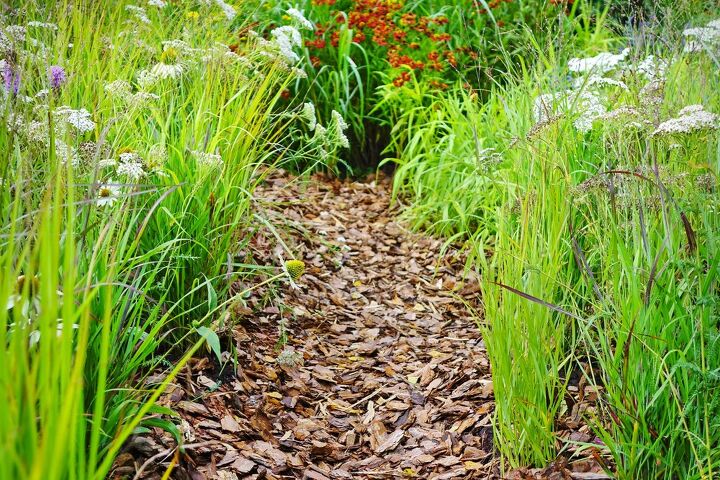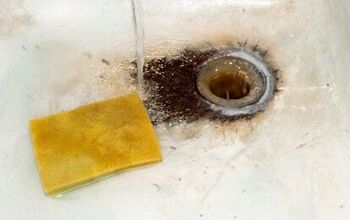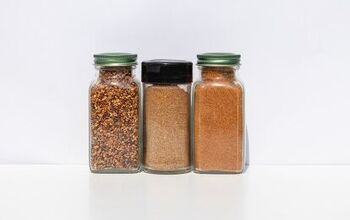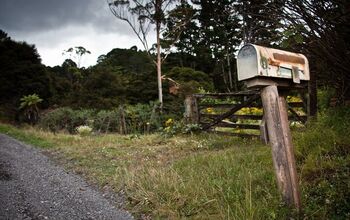What To Do With Old Mulch (Find Out Now!)

If you do any sort of gardening or landscaping, mulch will be your best friend. In addition to adding aesthetic appeal to your land, mulch is crucial for keeping your soil healthy from season to season. Applying mulch is not a one-time job. You will have to replace and dispose of organic mulch as it decomposes, and you’ll eventually want to replace inorganic mulch, too.
Though you may want to get rid of your old mulch right away, you can actually use it as a soil amendment. Old mulch will still provide a protective barrier against weeds, a layer for better moisture retention, and extra ground cover. That said, you may still need to add new mulch on top for better coverage.
When using old mulch for your plants, it’s important to pay attention to decomposition rates. Once the bottom layer completely decomposes, you’ll have to remove it and dispose of it. Once it’s time to get rid of your mulch, you can simply throw it in the trash or into a compost pile.
Do You Need Landscaping Services?
Get free, zero-commitment quotes from pro contractors near you.

What is Mulch?
Mulch is a gardening material that helps to feed and shield your plants from temperature changes, soil-borne diseases, and harmful weeds. It is layered over exposed soil year-round to protect the soil, plants, shrubs, and trees.
Mulch can be made from a wide range of materials, both biodegradable and nonbiodegradable. Each type comes with its own pros and cons, and we’ll be going over that below, too. First, let’s learn about old mulch.
How to Tell if Your Mulch is Still Usable
It’s actually quite simple to see if your mulch is still in good enough condition to use. All you have to do is pick up some mulch and move it around in your hand to inspect it. If the soil looks like fine particles that basically resembles dirt, it’s probably time to replace the mulch. It won’t be functional and can actually harm your plants because it has been exposed to the sun, winter climate, water, and more.
How to Use Old Mulch Correctly
In most cases, old mulch is still useful for protecting your soil, which can help you save money over time. However, it’s important to do so correctly or else you risk harming your plants instead of helping them. There are a few things to consider when reusing your old mulch. Specifically relating to…
- Wood materials: Before putting mulch made of wood materials back into your soil, mix them in with compost first. Wood on its own will eat up nitrogen, which is necessary for your plants’ health. The compost will speed up decomposition of the wood and have fresh nitrogen ready for your plants before it is laid down. Nitrogen-dense materials like manure and grass clippings are especially helpful for this process.
- Grass clippings: After mowing the lawn, the easiest way to use the clippings for your soil is simply to leave them where they call. However, you need to make sure the clippings are small enough, so they actually decompose into the soil. Otherwise, you can cause matting and actually harm the soil over time.
- Mulch layer thickness: A layer of mulch should usually be about three to four inches high, so your old mulch may not be enough to cover the area adequately. If this is the case, be sure to add new mulch on top of the old layer for proper coverage.
What to Avoid When Using Old Mulch
Much like incorrectly using new mulch, repurposing your old mulch the wrong way can lead to plant diseases, pests, and more issues with your plants. In fact, you can actually end up killing them. That said, it’s just as important to know what not to do with your mulch as it is to know what to do.
- Do not use plastic mulch for any shrubbery. Over time, this will limit their roots’ access to oxygen and water, which will cause the roots to expose themselves.
- Do not pile too much mulch around the stems of your plants or trunks of the trees. These piles can quickly become a home for harmful pests and rodents.
- Do not place wet mulch too close to plant stems as it can cause them to rot. Keep it at least an inch away from plant stems and six to twelve inches away from tree trunks and shrubs.
- Do not leave too much mulch around plants once springtime rolls around as it can increase temperatures too much.
Types of Mulch
Mulch can be split into two categories: organic and inorganic. Each have their own advantages and drawbacks and are better suited for different types of gardening projects. We’ll briefly go over a bit about both types, so you can select the best type for your landscaping project.
Organic Mulch
Most people use mulch that is made from organic materials. These are usually by-products from other industries and are mainly made from plant and animal materials. Over time, it decomposes and returns these natural nutrients back into the soil.
Organic mulch is advantageous because it minimizes soil erosion, encourages the growth or healthy microorganisms, slows the spread of soil-borne illnesses, and conserves soil moisture. However, you will have to replace these over time since they are constantly decomposing, which can add up over time.
Here are some common types of organic mulch:
- Wood/Bark Chips
- Sawdust
- Dried Leaves
- Cardboard/Newspapers
- Dry Grass Clippings
- Straw
- Seed-Free Hay/Salt-Hay
Inorganic Mulch
Inorganic mulches are made from human-made materials and are usually used specifically to create barriers to weeds. People mostly use them in commercial gardens since they don’t break down as quickly. That means you don’t have to replace them as often.
While inorganic mulches aren’t as nutritious for your soil, they can still be beneficial. For starters, they are low-maintenance and highly versatile. Plus, they are great at retaining moisture and can add aesthetic value to your space, too. On the downside, they can be a bit more difficult to install and are usually more expensive upfront, too.
The most common types of inorganic mulches includes:
- Landscape Fabric
- Stone
- Rubber
- Plastic Film
Related Questions
What type of organic mulch lasts the longest?
Bark type mulches typically last the longest, ranging from 7 to 10 years on average. If you’re looking for the very best, cedar mulch is extremely resistant to pests and decay. That said, they are not as nutrient-rich as other wood mulches.
How do you prepare mulch beds?
Before you put any mulch down, there are a few steps you should follow for best results. First, kill and remove any weeds and trim your bushes and trees. Next, rake your mulch bed to get rid of any debris. From there, you’ll be ready to cultivate the soil and edge the mulch bed. After that, smooth everything out and treat the bed. Finally, you’re ready to mulch!
What do you use mulch for throughout the winter?
Even though you won’t be planting in the winter, you should still mulch your gardening beds in the fall. This way, you can protect the soil from the harsh weather. On top of shielding the fertile mulch, this will also stop it from plowing away with high gusts of wind.
Do You Need Landscaping Services?
Get free, zero-commitment quotes from pro contractors near you.

Final Thoughts About Old Mulch
Old mulch can be a useful material for your garden, so think twice before you toss it in the trash. If your mulch is still in good condition, repurpose it for your garden. This way, you can get the full use out of mulch and don’t have to spend money on new mulch as often.

I am a copywriter and editor based in the Las Vegas area with nearly a decade of experience under my belt writing landing pages, cost guides, blog posts, newsletters, case studies, and social media content. I have a degree in Strategic Communication and experience working in both the account and creative spheres. My goal is to always be discovering new interests and bettering myself as a writer and editor along the way.
More by Kerry Souder



























